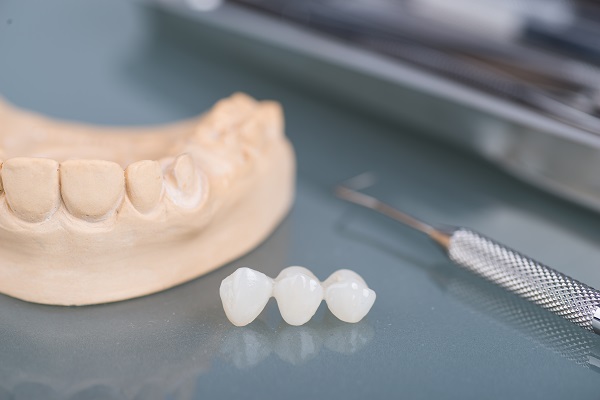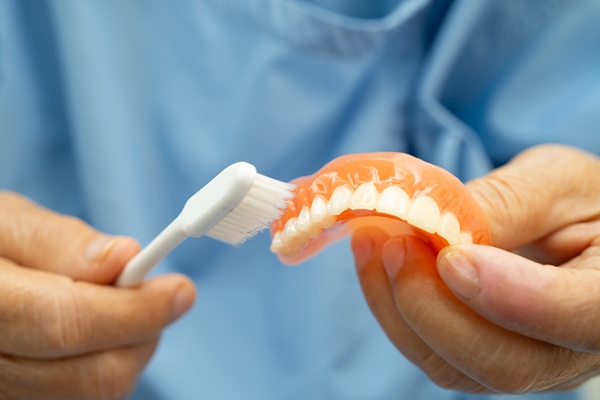When a Dental Bridge May Be Recommended

There are various reasons why a dental bridge might be recommended. A dentist might advise you to get one if you have multiple missing teeth next to each other (typically no more than three) and your budget is not enough to cover implants.
A dental bridge might also be recommended if a dentist deems you are not a great candidate for implants due to concerns about your ability to recover from oral surgery. Dental bridges are oral prosthetics that replace multiple missing teeth that are next to each other. The bridge is typically secured with the two teeth closest to the space left by the missing teeth.
What to expect when getting a dental bridge
Dental bridges help to restore the aesthetics and function of lost teeth. The artificial teeth that come with the restoration are usually made out of porcelain since the material shares similar characteristics with natural teeth, like its white color and translucence. The pontics can also be made from other materials like silver, gold, or metal allows.
Restoring the function of a person’s teeth allows them to enjoy a broader range of foods, which often leads to improved digestion. Replacing lost teeth also helps to improve speech and pronunciations.
The process
Getting a dental bridge starts with the dentist examining the patient’s mouth to determine if a bridge is the right solution for them. The teeth used as abutments are closely examined to make sure they are strong enough to anchor down the patient’s teeth.
The integrity of the teeth around the gap determines the type of dental bridge the dentist recommends. Traditional and Maryland bridges require two teeth as abutments, while cantilever bridges are installed using only one abutment.
Once the type of bridge that will be used has been selected, the abutments are then prepared for the crowns that will be placed on them by shaving off enamel from their sides. This leads to a tighter fit with the crown.
The dentist then takes an impression of the patient’s mouth and sends it to a dental lab where restorations like bridges are made. It takes a couple of weeks for the patient’s customized bridge to get back to the dentist. The prepared abutments are protected with temporary crowns for the time being.
The patient comes back for a second appointment once their oral prosthetic is ready. The temporary crowns are removed, and the bridge is secured to the abutments with the crowns attached. Alterations are made as needed to ensure everything looks right. The patient walks out of the clinic with their smile restored. Other benefits of replacing teeth with a bridge include:
- The patient’s ability to chew is restored
- The patient’s speech and pronunciation is improved
- The bridge prevents the patient’s remaining teeth from moving out of alignment
Explore dental bridges
Dental bridges get you natural-looking artificial teeth that improve the way your smile looks and restores your ability to enjoy your favorite foods. Call or visit our Ann Arbor clinic to set up an appointment with our dentist.
Request an appointment here: https://www.annarborpersonaltouchdentistry.com or call Shiva G. Rad, D.D.S. at (734) 436-0817 for an appointment in our Ann Arbor office.
Check out what others are saying about our dental services on Yelp: Dental Bridges in Ann Arbor, MI.
Recent Posts
A dental crown is an ideal solution for restoring teeth. But there are particular problems that can occur with a crown. If you experience any complications after your crown is placed, you should contact your dentist as soon as you can. Several clues can tell you that your dental crown needs the dentist’s attention. Read…
Understanding how Invisalign® works is the first thing you must do when considering this popular teeth straightening option. You will undergo an initial evaluation performed by a dental professional, who will then assign you a certain number of custom-made aligner sets, which need to be switched out every two weeks. After using the last set…
One of the challenges after replacing missing teeth is adjusting to new dentures. Although they improve your appearance and allow for better function, dentures can take some getting used to. The time it takes to adjust often depends on the amount of time you went without teeth and the type of dentures you have.Whether you…
You may have heard a lot about sedation dentistry recently. It is appealing to many patients, especially those who have fears about dental treatments. Visiting the dentist may not be the most exciting event in your life, but these appointments are important. You should not avoid seeing the dentist because you are worried about the…


